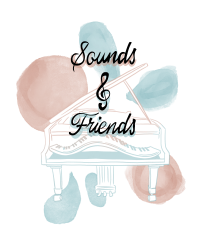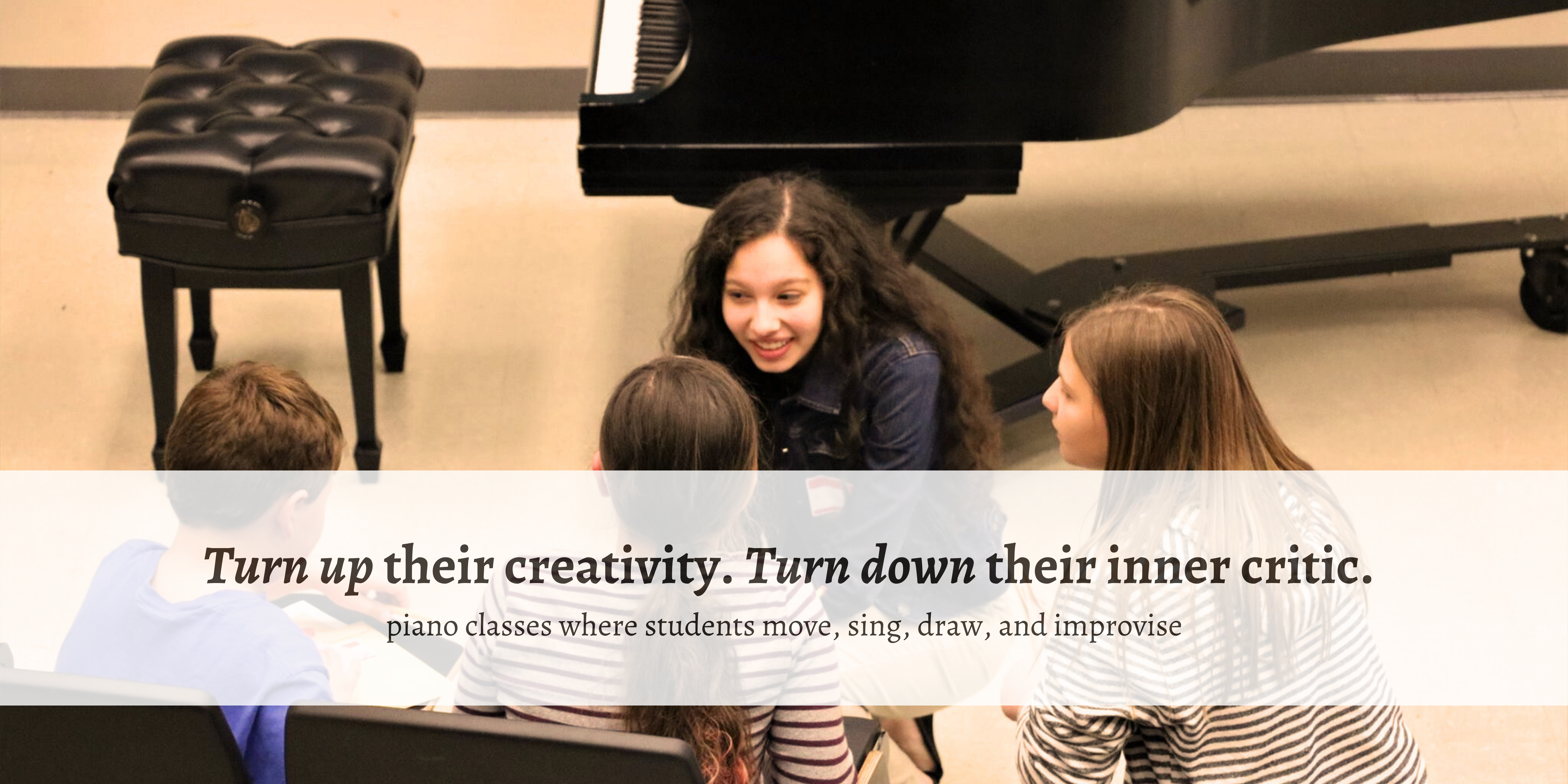An innovative, research-based approach to learning piano
If you play piano without understanding music, you’re just pushing the keys and admiring the sounds. It’s kind of like typing in a foreign language. Sure, it looks cool…but you’d never assume you were fluent.
It would be terrifying to actually speak in that language. You’d constantly doubt yourself because you wouldn’t immediately understand what native speakers were saying and you wouldn’t be able to think fast enough to respond in a not-awkward amount of time.
Music is the same.
At Sounds and Friends, students internalize the language of music through movement and experimentation.
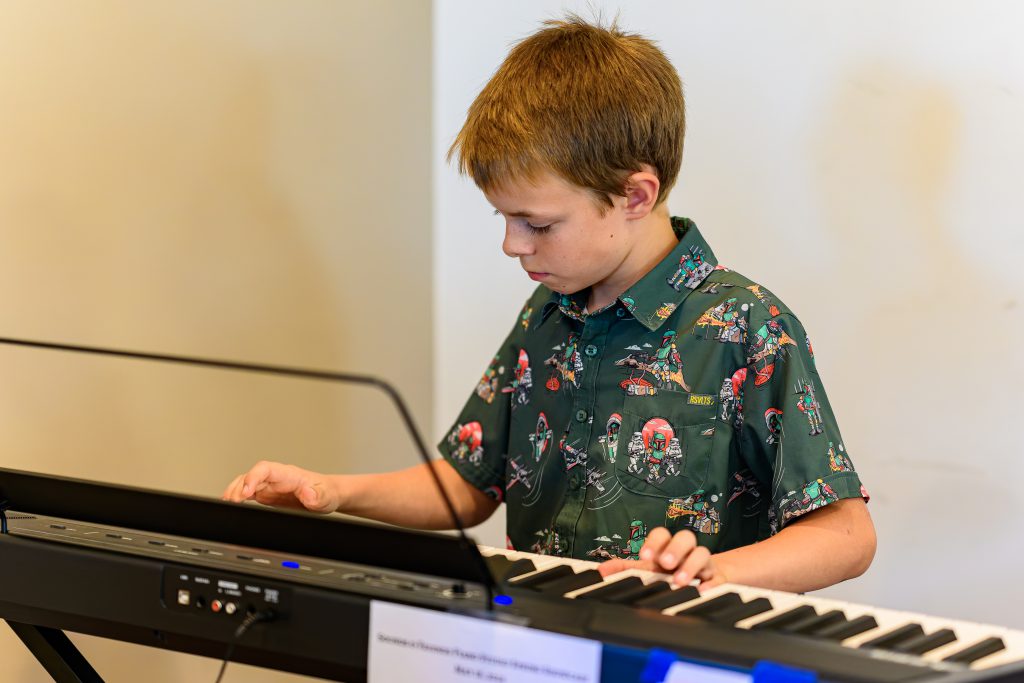
Watch your kid:
- Get comfortable with music…by learning what questions to ask and how to answer them so they know what Beethoven, Bebe Rexha, and all the other composers were up to when they were creating their hits.
- Own it…by coming up with their own spin on a song and playing it for their classmates. (And they’ll understand the structure of music so they can create without playing the musical equivalent of “You today are how?”)
- Know what they’re doing. Literally – how are their biceps working to make their playing louder? Are their sitting bones helping or hindering them from reaching the edges of the piano?
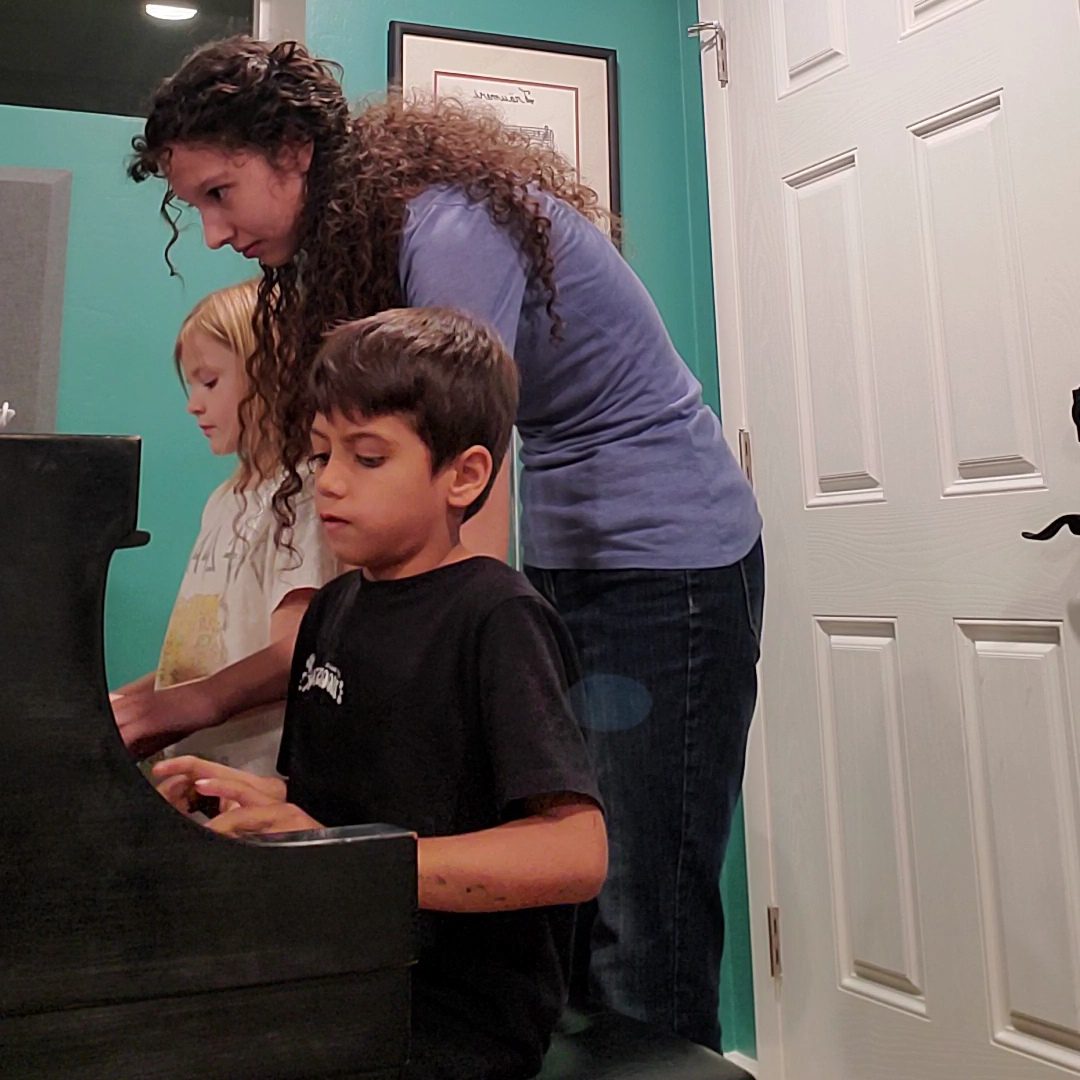
Arielle’s approach takes into deep consideration the passion necessary to begin a relationship with this instrument. Lessons begin not just with “this key is called” but with “your shoulder needs to; your bicep should be; your feet go like this”: and then she adds the audible rhythmic notes that hold the lesson within.
It is a moment of pure delightful magic when the lessons turned into music. My granddaughter plays me a beautiful tune that flows from within her. I watch her arms, wrists, fingers gently coax the sound forth and even she is delighted! The look of accomplishment on Haleigh’s face is all the assurance I need to know that proves that Arielle’s teaching techniques ignite that passion for the desire to play music from the heart and not just the assigned pages.
~ Teri C., Haleigh’s grandmother
Learn to play piano using research-based principles:
- Start with the ears (because music is an aural art form). Your kids will listen and move to many short songs with different musical patterns – first for exposure, then identification. (Think of patterns as the “words” of music.)
- Improvise and experiment! “Experience is the best teacher” – so your kids will take those patterns they’ve been listening to and sing, chant, and play with them. They’ll then create their own music by combining the patterns.
- Read and write. After gaining a huge understanding of music from listening, improvising, and experimenting, your kids will start reading and writing those familiar patterns (just like you probably read and wrote words like “cat” at first, not words like “extraterrestrial”).
Hello! I’m Arielle Sukhram-Ziemer, pianist and piano teacher.
I have a Master of Music in Collaborative Piano (ASU) and I’ve been teaching for almost a decade. I know that both parents and kids today are juggling overflowing schedules – but I don’t believe that music should be a casualty of a lack of time to practice.
My solution? I don’t overwhelm students with tons of information that they need to go home and process. Instead, my students learn one concept at a time and cement it in their classes – building a solid foundation that isn’t impacted by the rest of their activities.
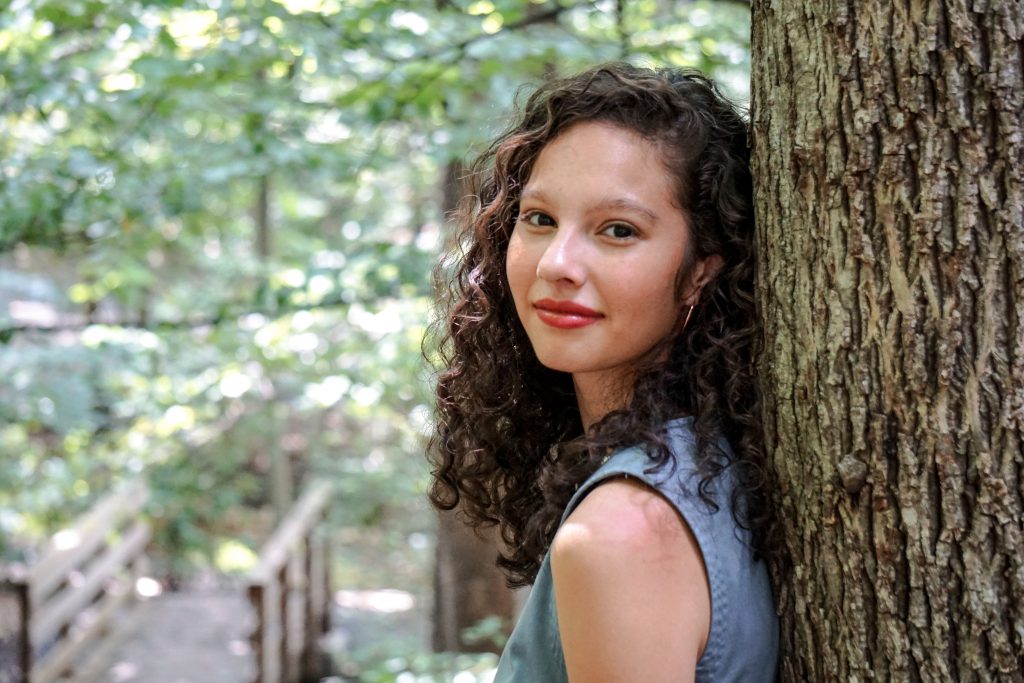
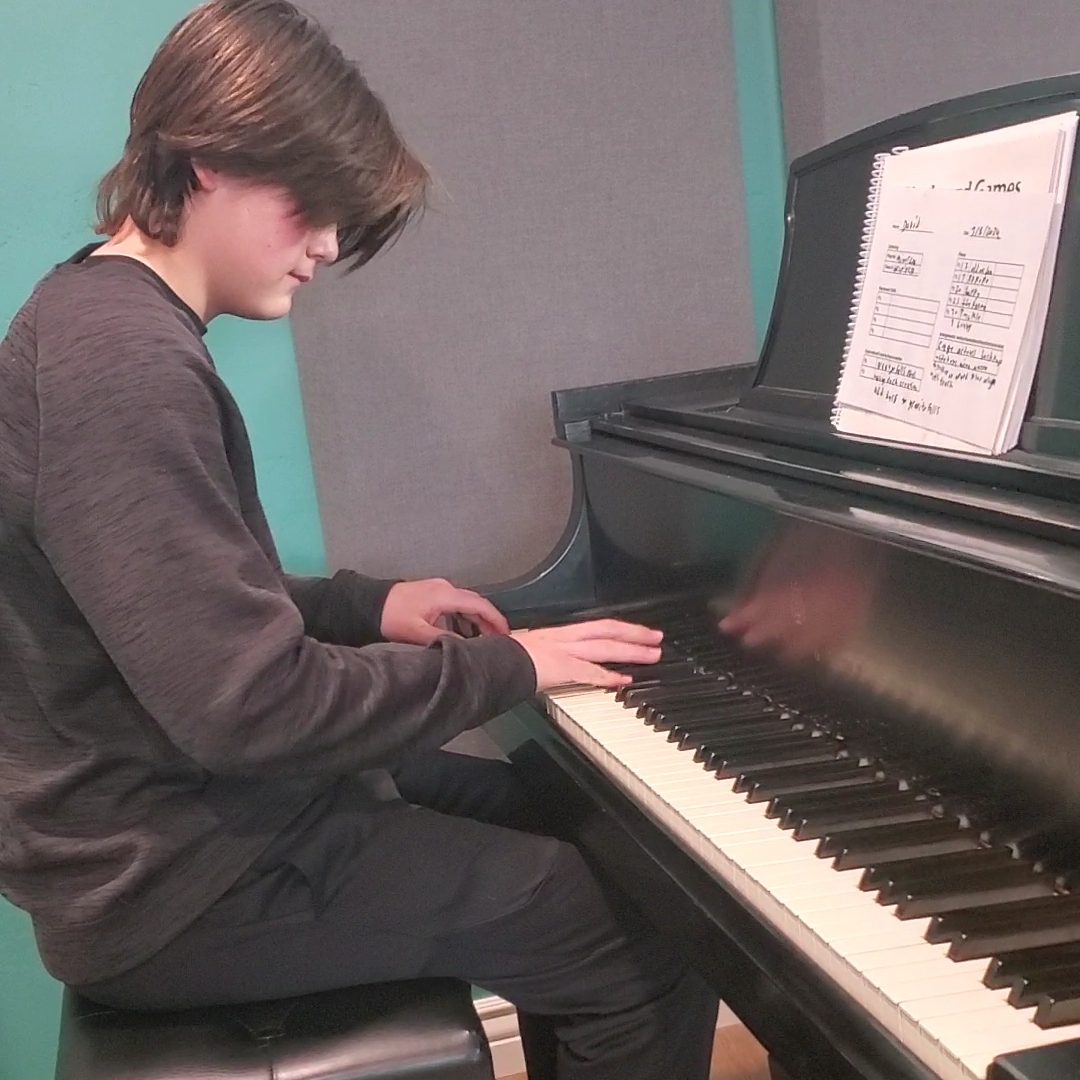
“Arielle has made amazing progress with my son. He has taken piano lessons before and was somewhat disinterested. Arielle has really tailored her teaching for my son to utilize his skill and technique and transform it into a love and passion… It is so rewarding to see how he is taking his lessons and using them to play songs that he loves for fun and without prompting.”
~ Lori B., Nixon’s mom
Let’s start playing!
Ready to go?
Curious about my background?
